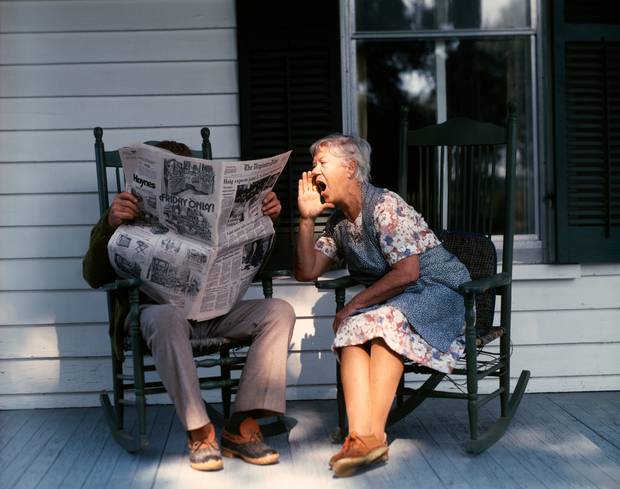Hearing loss affects more than 38 million individuals in the United States, the majority of whom do not address their hearing loss. According to the National Institute on Deafness and Communication Disorders (NIDCD), men are twice as likely to experience hearing loss. The NIDCD also reported that men are less likely to talk about their hearing loss.
HIA examined this gender issue in MarkeTrak surveys in 2014 and 2018 and found that in self-reported hearing loss across all age groups, about 13% of men reported hearing loss while only about 8% of women reported having a hearing loss. For those over age 60, the self-reported hearing loss for men was 31% while only 21% of women reported the same.
What factors contribute to the increased hearing loss for men?
 Noise exposure is a leading cause of hearing loss for men who have traditionally been more prevalent in environments with loud noise, such as careers in the military, jobs in construction or industrial settings or in recreational activities associated with loud noise. This long-term noise exposure often results in high-frequency hearing loss and while not limited to men, men are more often affected. Research suggests that women lose their low-frequency hearing first.1 In studying the differences between low-frequency and high-frequency hearing loss, biologic factors have been studied related to these differences with ovarian hormonal changes being the main suspect in the hearing loss pattern for women.2 High-frequency loss tends to impact your ability to hear consonants, where low-frequency loss impacts your ability to hear vowels.
Noise exposure is a leading cause of hearing loss for men who have traditionally been more prevalent in environments with loud noise, such as careers in the military, jobs in construction or industrial settings or in recreational activities associated with loud noise. This long-term noise exposure often results in high-frequency hearing loss and while not limited to men, men are more often affected. Research suggests that women lose their low-frequency hearing first.1 In studying the differences between low-frequency and high-frequency hearing loss, biologic factors have been studied related to these differences with ovarian hormonal changes being the main suspect in the hearing loss pattern for women.2 High-frequency loss tends to impact your ability to hear consonants, where low-frequency loss impacts your ability to hear vowels.
Hearing is of course only part of the equation; listening is the other piece that leads to successful communication. To improve communication for those with hearing loss, hearing aids are the primary treatment option. This is where we also see gender differences. MarkeTrak data showed that men had a slightly higher ownership percentage of hearing aids than women for all ages (men=4.3%, women=3.0%), however for those over 60 the ownership among men was much higher (men=12.6%, women=7.9%). These ownership rates could be related to the different hearing loss patterns for men and women. Since men have more difficulty with high-pitched sounds and this impacts communication more than low-pitched sound, they may seek help more often than women. Family status may also play a role, as spouses may influence medical decisions and urge their loved one to seek help for their hearing loss and communications issues.